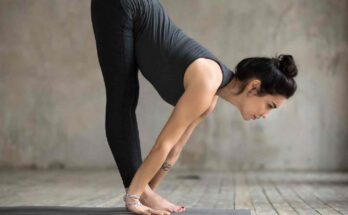Around 9-23 percent of the global population suffers from Irritable Bowel Syndrome or IBS, according to past estimates. It is a rampant gastrointestinal disorder that affects people across all age groups. Since some of its major symptoms include abdominal pain, cramping, excessive gas, bloating, and a change in bowel movements, it hampers the quality of life of the people suffering from it. IBS usually gets triggered due to hormonal imbalance, bad eating habits, and persistent stress, but it affects everyone in different ways.
To some, IBS can make them feel feeble, while others only show mild or moderate symptoms. The exact cause of IBS is still unknown. As a result, proper diagnosis can be extremely challenging and treatment options fail to show evident results. IBS is not just a bowel/gastrointestinal tract disorder but is actually a chronic psychological condition where the GI tract gets compromised because the central nervous system is under stress for a very long time. Since IBS is linked to the brain, yoga can be of help in curbing the grave symptoms of IBS by helping soothe the central nervous system.
Recently, Shynee Narang, a certified yoga instructor, took to her social media to share how yoga can help to deal with irritable bowel syndrome. Read on to know how yoga for IBS can be helpful.

Yoga poses for IBS
IBS causes changes in your bowel habits and develops into a vicious cycle.
• Stress and anxiety can disturb the central nervous system which releases stress hormones that affect our gut causing diarrhea, constipation, gas, or bloating.
• Also, unhealthy food habits can lead to gastrointestinal symptoms like cramping pain, changes in bowel habits, and flatulence, and these symptoms cause stress, and vice versa.
• External factors like work, relationships, and mental health can also trigger GI symptoms.
Here are a few yoga poses/stretches that can be of help to calm down the aggravated system!
1. Upward-facing dog
Upward facing dog helps in relieving symptoms of depression, stress, or anxiety.
How to perform this pose?
1. Start by lying down flat on the mat, and bring the hands underneath the elbows.
2. Squeeze the elbows together, and draw the shoulders back.
3. Press down onto the top of your feet, and curl the chest upwards.
4. Straighten your arms, and lift your thighs above the ground.
5. Activate the legs, engage the glutes, and squeeze the inner thighs. Draw the shoulders back, and pull the shoulder blades together
6. Elevate up through the crown of your head to lengthen the neck, and bring the gaze forward.
2. Bow pose
Bow pose helps to enhance blood circulation, improves body posture, and helps manage digestive and chest ailments.

How to perform this pose?
1. Come on to your belly on the mat.
2. Extend the legs behind you, and bring your forehead down and hands next to your hips.
3. Bend your knees and reach back with your hand to grab your ankles
4. Squeeze your inner thighs together. Press yourself back by lifting your chin to lift yourself by allowing the arms to straighten, and use the power of your legs to press back, even more, to lift your knees off the ground.
Also read: Digestion in winter: 5 yoga poses to reset your gut health
3. Camel pose
Camel pose helps reduce fat on the thighs, expands the abdominal region, and helps improve digestion and elimination.

How to perform camel pose?
1. Begin by sitting in Vajraasna and stand on your knees by widening your legs.
2. Inhale, and then exhale by pushing your hips forward and slowly bringing your arms to your ankles, and arch back.
3. To release the posture, inhale, and relax in the child’s pose.
These poses stimulate digestive organs and improve the digestive system. Apart from that, one can also perform deep breathing, Anulom Vilom, meditation, and Yoga Nidra to alleviate the symptoms.
Source link




